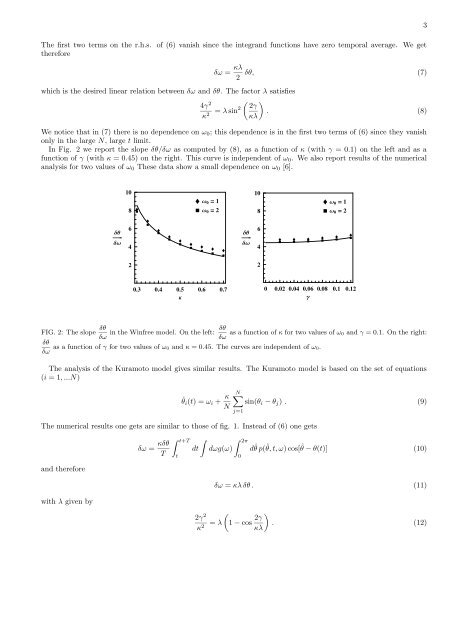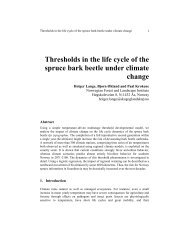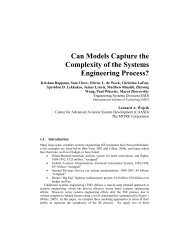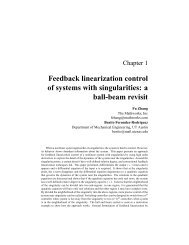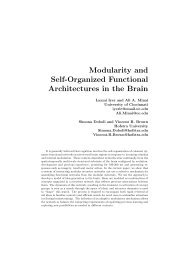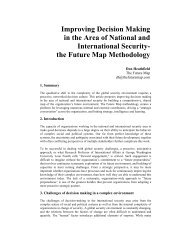Phase shifts between synchronized oscillators in the Winfree and ...
Phase shifts between synchronized oscillators in the Winfree and ...
Phase shifts between synchronized oscillators in the Winfree and ...
You also want an ePaper? Increase the reach of your titles
YUMPU automatically turns print PDFs into web optimized ePapers that Google loves.
The first two terms on <strong>the</strong> r.h.s. of (6) vanish s<strong>in</strong>ce <strong>the</strong> <strong>in</strong>tegr<strong>and</strong> functions have zero temporal average. We get<strong>the</strong>refore3δω = κλ 2δθ, (7)which is <strong>the</strong> desired l<strong>in</strong>ear relation <strong>between</strong> δω <strong>and</strong> δθ. The factor λ satisfies4γ 2 ( ) 2γκ 2 = λ s<strong>in</strong>2 . (8)κλWe notice that <strong>in</strong> (7) <strong>the</strong>re is no dependence on ω 0 ; this dependence is <strong>in</strong> <strong>the</strong> first two terms of (6) s<strong>in</strong>ce <strong>the</strong>y vanishonly <strong>in</strong> <strong>the</strong> large N, large t limit.In Fig. 2 we report <strong>the</strong> slope δθ/δω as computed by (8), as a function of κ (with γ = 0.1) on <strong>the</strong> left <strong>and</strong> as afunction of γ (with κ = 0.45) on <strong>the</strong> right. This curve is <strong>in</strong>dependent of ω 0 . We also report results of <strong>the</strong> numericalanalysis for two values of ω 0 These data show a small dependence on ω 0 [6].108Ω 0 ⩵ 1Ω 0 ⩵ 2108Ω 0 ⩵ 1Ω 0 ⩵ 2∆Θ∆Ω64∆Θ∆Ω64220.3 0.4 0.5 0.6 0.7Κ0 0.02 0.04 0.06 0.08 0.1 0.12ΓFIG. 2: The slope δθδω <strong>in</strong> <strong>the</strong> W<strong>in</strong>free model. On <strong>the</strong> left: δθas a function of κ for two values of ω0 <strong>and</strong> γ = 0.1. On <strong>the</strong> right:δωδθas a function of γ for two values of ω0 <strong>and</strong> κ = 0.45. The curves are <strong>in</strong>dependent of ω0.δωThe analysis of <strong>the</strong> Kuramoto model gives similar results. The Kuramoto model is based on <strong>the</strong> set of equations(i = 1, ...N)˙θ i (t) = ω i + κ NN∑s<strong>in</strong>(θ i − θ j ) . (9)j=1The numerical results one gets are similar to those of fig. 1. Instead of (6) one gets<strong>and</strong> <strong>the</strong>reforeδω = κδθT∫ t+Tt∫dtdωg(ω)∫ 2π0dˆθ p(ˆθ, t, ω) cos[ˆθ − θ(t)] (10)δω = κλ δθ . (11)with λ given by2γ 2 (κ 2 = λ 1 − cos 2γ ). (12)κλ


